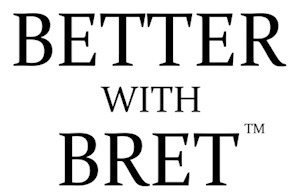Definitions for Domain Names - Meanings of domain name related terms...
Administrative Contact
An administrative contact is an individual authorized to interact with the registrar on behalf of the domain name registrant. The administrative contact should be able to answer non-technical questions about the domain name's registration and the domain name registrant. It is strongly recommended that the administrative contact be the registrant, or someone from the registrant's organization.AERO
Top-level domain reserved for members of the aviation community.Billing Contact
A billing contact is the person designated to receive the invoice for domain name registration and renewal fees. The billing contact should be in a position to ensure prompt payment of fees.BIZ
Top-level domain reserved for the business community.Browser
A computer program that allows a person to view Web pages. The browser gives some means of viewing the content of Web site pages and of navigating from one page to another.COM
Top-level domain that was intended just for commercial sites, but has become the most commonly used TLD on the Web.CC
Top Level Domain that is sometimes used as an alternative to COM, though it is actually a country code for the Cocos or Keeling Islands.COOP
Top-level domain reserved for co-operative businesses.DNS
A distributed database of information that is used to translate domain names, which are easy for humans to remember and use, into Internet Protocol (IP) numbers, which are what computers need to find each other on the Internet. People working on computers around the globe maintain their specific portion of this database, and the data held in each portion of the database is made available to all computers and users on the Internet. The DNS is comprised of computers, data files, software, and people working together.Domain Name
In short, a domain name is nothing more than an alias for a numeric Web address. Each Web site on the Internet has a numeric address that functions like coordinates on a map. Instead of pointing to a geographic location on Earth, these numeric addresses, called IP addresses, point to a location on the Internet. Computers have no problems with locating and remembering numeric addresses. In contrast, many people have trouble remembering long, complicated sequences of numbers. So, to make navigating the Internet easier, the domain name system was invented. This system allows people to use easy-to-remember names for Web sites instead of numeric sequences.EDU
A top-level domain available exclusively to educational institutions certified by one of the six U.S. regional accrediting agencies.Fully-Qualified Domain Name
A fully-qualified domain name (FQDN) includes all parts of a domain: the hostname or subdomain, the domain name, and the top-level domain. They are often seen in the URLs for Web sites (e.g."https://www.fenclwebdesign.com").FTP
File Transfer Protocol is the Internet standard for transferring files from one computer to another, i.e. from a Web developer's computer to the hosting server for her Web site. FTP client software is usually used for this purpose. WS_FTP, CuteFTP, and CoffeeCup are all popular FTP clients. Additionally, there are many Internet sites that have established publicly accessible repositories of material that can be obtained using FTP by logging in using the account name 'anonymous' and an email address as the password.HTTP
Documents on the World Wide Web are written in a simple "markup language" called HTML, which stands for HyperText Markup Language. HTML looks a lot like old-fashioned typesetting code, where you surround a block of text with codes that indicate how it should appear. Additionally, in HTML you can specify that a block of text, or a word, is linked to another file on the Internet. HTML files are meant to be viewed using a browser, such as Netscape or Internet Explorer.Hypertext
HyperText Transfer Protocol is the protocol for moving hypertext files across the Internet. It requires an HTTP client program on one end, and an HTTP server on the other. HTTP is the most important protocol used in the World Wide Web (WWW).IANA - Internet Assigned Numbers Authority
Internet Assigned Numbers Authority is the agency that oversees registration for various Internet Protocol parameters, such as port numbers, enterprise numbers, options, codes, and types. The IANA function is currently located at the Information Sciences Institute at the University of Southern California in Marina del Rey, CA.ICANN - Internet Corporation for Assigned Names and Numbers.
ICANN is the non-profit corporation that assumed responsibility from the U.S. Government for coordinating certain Internet technical functions, including the management of Internet domain name system. More information about ICANN can be found at their Web site: www.icann.org.INFO
Top-level domain that is unrestricted, but is generally used for informative purposes.InterNIC
The InterNIC is a concept for an integrated network information center that was developed by several companies, including Network Solutions, in cooperation with the U.S. Government. Currently, the term "InterNIC" is being used in conjunction with a neutral, stand alone Web page, located at http://www.internic.net, that was established for the purpose of providing the public with information regarding Internet domain name registration. InterNIC is a registered service mark of the U.S. Department of Commerce.IP Address
Every machine that is on the Internet has a unique IP number - if a machine does not have an IP number, it is not really on the Internet. Most machines also have one or more Domain Names that are easier for people to remember. IP addresses are comprised of four numbers between 0 and 255, separated by periods (e.g. 216.168.224.69). For more information, HowStuffWorks.com has an easy to understand essay on How IP Addresses Work as a part of its larger article on How Domain Name Servers Work.ISP
Internet Service Provider - While rather a generic term, ISP generally refers to a person, organization, or company that allows its users access to the Internet. In addition to Internet access, many ISPs provide Web hosting, DNS, and other services.AI Phone Systems
AI-powered phone systems are modern communication platforms that use artificial intelligence to manage calls, capture leads, and automate customer responses. Tools such as the PowerSuite AI Phone System can instantly text back missed calls, route inquiries, and assist businesses 24/7.
AI phone systems integrate seamlessly with websites and domains, giving small businesses smarter communication and stronger online engagement. Learn more here: Why I Partnered With PowerSuite AI.
MIL
Top-level domain operated exclusively by the United States Military.MUSEUM
Top-level domain reserved for museums.NAME
Top-level domain reserved exclusively for individuals.Name Server
A computer (server) that has both the software and the data (zone files) needed to resolve domain names to Internet Protocol (IP) numbers. Domain names must be programmed into a minimum of two name servers hosted on separate networks.NET
Top-level domain that is unrestricted, but primarily used by Internet service providers (ISPs).ORG
Top-level domain that is unrestricted, but mainly used by nonprofit organizations.Parked Domain
A domain that has been pointed to a generic or simple Web site on the Registrar's network. Domains are usually parked while Web sites for them are under development. Then, after the site is ready, the domain is unparked and pointed to the DNS for the hosting provider's network. This is done to avoid paying for a hosting account before a site is ready to be uploaded. Domains that have been parked with Fencl Web Design.Com can be used for email or one-page Web sites.Registrant
The individual or organization that registers a specific domain name. This individual or organization holds the right to use that specific domain name for a specified period of time, provided certain conditions are met and the registration (NIC) fees are paid. This person or organization is the "legal entity" bound by the terms of all applicable domain registration Service Agreements.Registrar
An entity with a direct contractual relationship with, and special access to, a registry, that inserts records on behalf of others.Registry
A database associating DNS information with some person, legal entity, operational entity, or other referent.Restricted top-level domain name - "rTLD"
A top-level domain, such as .biz, .gov, .museum, .name, and .pro, that is only available to registrants who meet certain criteria.Root
The Root is the top of the Domain Name System hierarchy. Often referred to as the "dot." May also be the top level directory on a web server.Server
A computer that provides a service to another computer on a network. If I network two identical machines in my house, and use one to retrieve a file from another, I have just used the second machine as a server. One of the more common kinds of servers is a Web server. These computers offer up Web pages when they are requested. So, when I go to microsoft.com, one of Microsoft's Web servers offers up a Web page to my computer. Most servers have special software that enables them to better manage requests. In the case of Web pages, IIS and Apache are two popular Web server platforms.Technical Contact
The person responsible for handling the technical aspects of a domain. If a corporation is the registrar of the domain, this person might be the CIO or the network administrator for the company. Otherwise, it is likely to be the same person as the Registrant Contact.TLD
Top Level Domain. In the Domain Name System (DNS), the highest level of the hierarchy after the root. In a domain name, that portion of the domain name that appears furthest to the right. The TLD is often termed the domain name extension. For example, the TLD is the COM in fenclwebdesign.com.URL
Uniform Resource Locator. An Internet "address." A draft standard for specifying the location of an object on the Internet, such as a file or a newsgroup. They are used in HTML documents to specify the target of a hyperlink, which is often another HTML document (possibly stored on another computer). An example of a URL is: https://www.fenclwebdesign.comThe first part of the URL, before the colon (often http), specifies the protocol. The part of the URL after the colon is interpreted based on the protocol or access method.
Forwarding
Redirecting all Web traffic for a domain to a specific URL. So, I might forward exampledomain.com to my free hosting space at http://customer.121.examplefreewebspace.com. Thus, to reach my site at my free web space, all a person would have to type in is the domain, rather than the long URL given to me by my free web space. Masking could also be used to try and help hide the fact that the site was on free web space once a visitor got there, if I so desired.US
Country-code top-level domain that is available exclusively for residents of the United States and its territories.Web Page
Simply, a block of information running on a Worldwide server process, identified by a specific URL. Such pages are most often written in HTML. It is also possible for a server to create a dynamic Web page via special scripts.Web Site
A document, usually written in HTML, that displays in a browser such as Internet Explorer or Netscape.Whois
A searchable database containing information about the domains managed through a given Registrar. Registrars are required to make the contact information for domains public.WS
Top-level domain that is generally interpreted as 'Web Site.'More Facts on Domain Names
Still need some more facts before registering your domain name? Here are a few more domain name facts and domain name registry questions that may provide the answers to questions you are looking for. If you can't find the answer on our web site please call us toll free at 1-888-7-WEB-PRO and we will try our best to help you.Want to Check Domain Names Availability?
See if the name you want is available now! Check Domain Name








